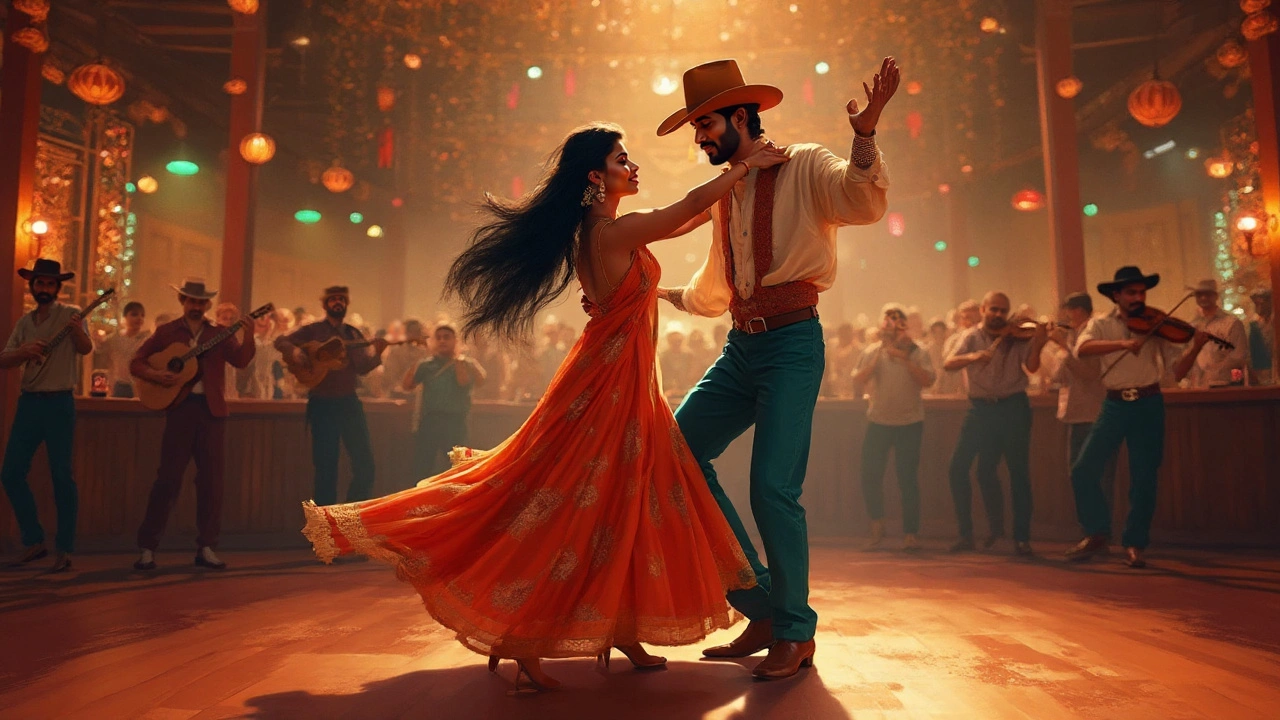
Texas Two-Step: The Classic Texas Dance Explained
Discover what the Texas Two-Step is, its history, steps, music, attire, and how it differs from other country dances. Perfect for beginners and seasoned dancers alike.
If you’ve ever watched a couple glide across a floor and felt the urge to join, you’re already curious about partner dance. It’s not just about fancy footwork – it’s a fun way to connect, stay fit, and boost confidence. Below you’ll find the simplest steps to get moving, the most popular styles, and quick tips that keep you safe and smiling.
There’s a partner dance for almost every taste. Salsa brings hot Latin beats and quick turns, perfect for those who love fast music. Ballroom offers smooth waltz, tango, and foxtrot, ideal if you enjoy graceful moves and classic tunes. If you want something local, try Indian folk pair dances like Bhangra or Garba – they use lively beats and easy steps that work for groups.
Don’t worry about choosing the "right" one right away. Try a beginner class or watch a few YouTube videos. Notice which rhythm makes you want to move and which steps feel natural. That feeling will guide you to the style you’ll stick with.
You don’t need a fancy outfit on day one. Comfortable shoes with a smooth sole (like dance sneakers or jazz shoes) prevent slipping. Wear clothes that let you move—think stretchy pants and a breathable t‑shirt. A clear, flat space about 10 feet wide is enough for basic steps. If you have a hardwood floor or a studio mat, you’ll get better glide and less strain.
Keep a water bottle nearby. Dancing raises heart rate, and staying hydrated helps you keep energy for longer practice sessions.
Start with the simple “basic step.” For salsa, it’s a forward‑backward pattern: step forward with the left foot, replace weight onto the right, then step back with the left. Mirror this on the right side. For ballroom waltz, try a slow‑quick‑quick rhythm: step forward, step to the side, close the foot. Practice these at a slow tempo, then add a gentle sway.
Once the basic feels easy, add a turn. Hold your partner’s hand, twist gently, and keep your core stable. Remember, the lead (usually the person who starts the move) signals with a slight push or pull; the follow responds with confidence. Communication is more about feel than words.
Never push beyond your comfort level. If a move feels shaky, slow down and break it into smaller parts. Warm up with light stretches for calves, hips, and shoulders before each session; this prevents strains. If you stumble, pause, laugh, and retry – dancing is meant to be fun, not perfect.
Practice with a partner you trust. A friend, sibling, or classmate who’s willing to learn together creates a supportive vibe. If you’re solo, try “mirror practice” where you imagine a partner and follow the cues yourself.
Set a small goal, like mastering the basic step in two weeks or attending one class per week. Celebrate tiny wins; they keep motivation high. Mix practice with socials – many studios host partner‑dance nights where you can try new moves in a relaxed setting.
Finally, enjoy the music. Pick songs with a clear beat, tap your foot, and let the rhythm guide you. When you’re having fun, learning speeds up, and the connection with your partner feels natural.
Partner dance isn’t just a hobby; it’s a lively way to bond, stay active, and explore culture. Grab a friend, pick a style you like, and step onto the floor. You’ll be surprised how quickly you pick up the flow and how much joy it brings to everyday life.

Discover what the Texas Two-Step is, its history, steps, music, attire, and how it differs from other country dances. Perfect for beginners and seasoned dancers alike.